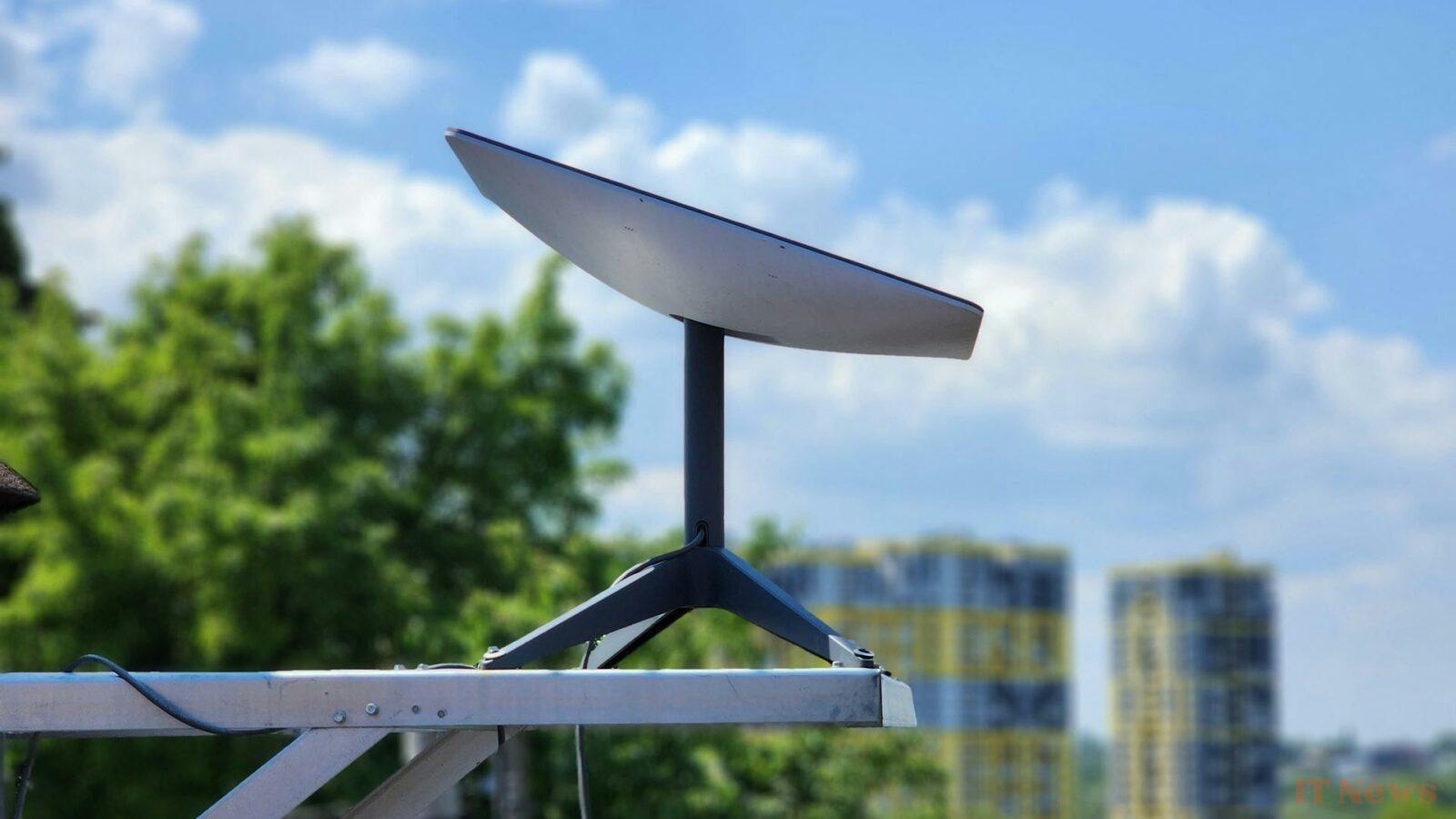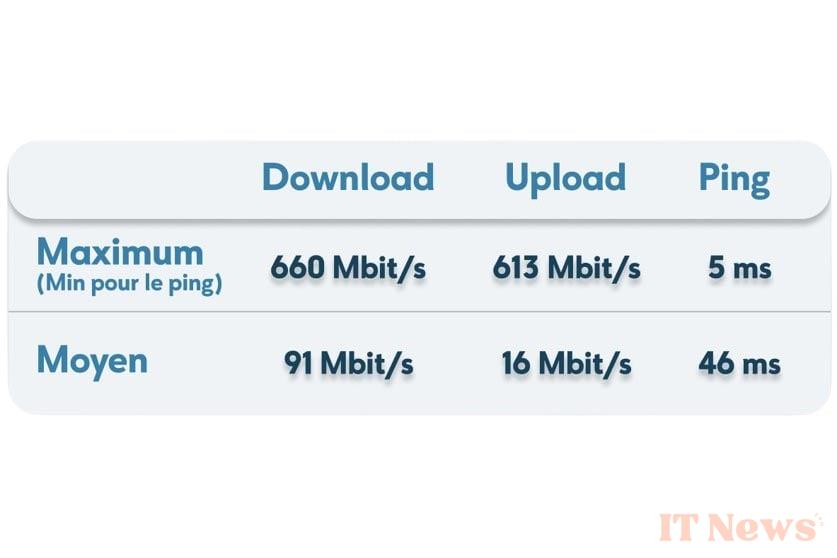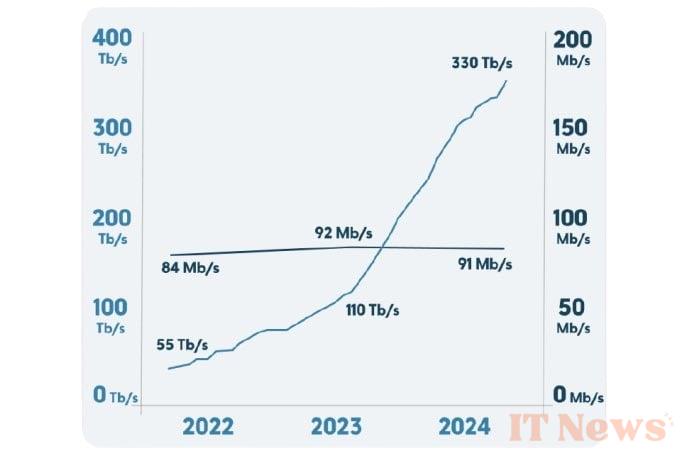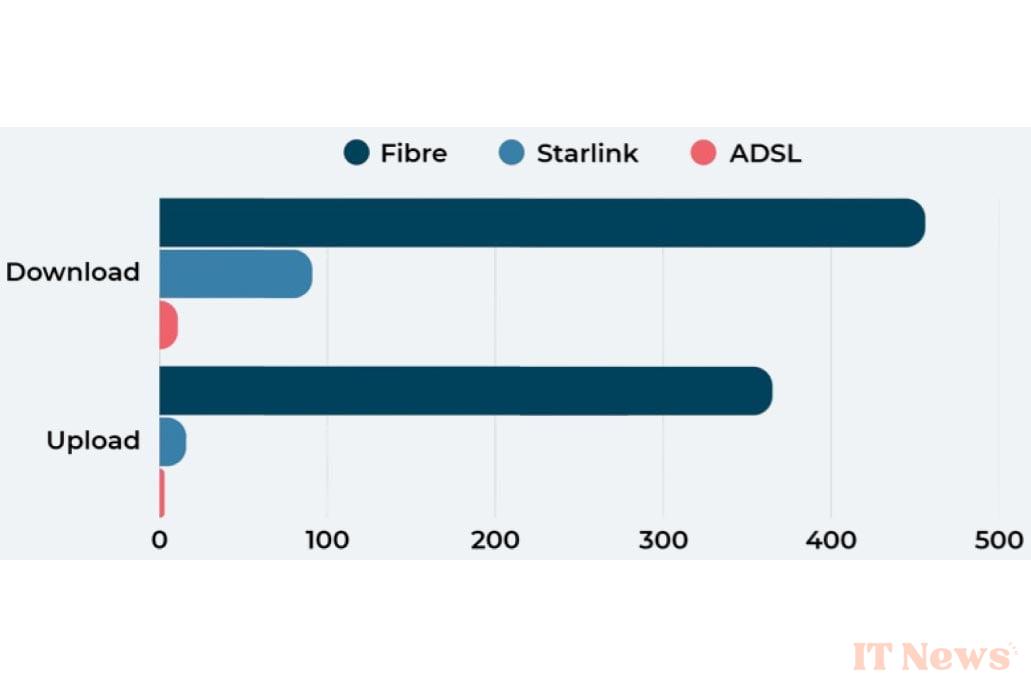Three years after its arrival in France, the Starlink satellite internet access offering continues to generate a lot of buzz. Between promises of blazing-fast speeds and fears of a network saturated by growing success, what does the situation really look like in the middle of 2025? Telecoms expert Zone ADSL&Fibre conducted the survey, and the results, based on an analysis of nearly 5,000 performance tests, are enlightening, to say the least, and confirm the robustness of the solution.
Performance that defies expectations and challenges preconceived ideas
With an average download speed of 91 Mb/s, Starlink is not just a figurehead. It is establishing itself as a more than credible alternative, easily exceeding the Very High Speed standard (30 Mb/s). For those who have been forgotten by fiber, it is a real revolution. Where ADSL often struggles with barely achievable speeds, Starlink offers a breath of fresh air, delivering speeds up to eight times faster. Upload speeds are not far behind, with an average of 16 Mb/s, crucial for teleworking or file sharing.
This is obviously not at the level of fiber, but it is still much better than ADSL, which rarely exceeds 3 Mb/s.
And what about latency, that famous "ping" often pointed out for satellite connections? It remains at a very respectable average of 46 milliseconds, perfectly compatible with most uses, including casual online gaming. Even more impressive, the measurements reveal spectacular speed peaks: with maximums recorded at 660 Mb/s for downloads, Starlink demonstrates that it can occasionally rival the speeds offered by optical fiber. Enough to dispel some preconceived notions.
Keeping up: the challenge of hypergrowth brilliantly met
But Starlink's real feat may lie less in its raw speeds, although already significant, than in its ability to maintain an effective service despite massive adoption. Because success is there with a customer base multiplied by five in the space of just two years at the global level, a real tidal wave that could have brought many infrastructures to their knees.
However, the French data is clear: the quality of service is holding up well and the network is resisting the load of hypergrowth. The average speed has remained stable, fluctuating between 84 Mb/s in 2022, rising to 92 Mb/s in 2023 and stabilizing at 91 Mb/s today. And this, even though the cumulative capacity of the network deployed by SpaceX has literally exploded, going from 55 Tb/s to 330 Tb/s over the same period to absorb these new users.
The secret of Elon Musk's solution lies in the constant deployment of satellites, with more than 7,000 active units by early 2025, including a new, significantly more powerful generation. The infrastructure is following suit, and that's excellent news.
The game-changing alternative, but one that doesn't make us forget about fiber and 5G
For the thousands of French households still trapped by the slowness of ADSL, or for those who see the arrival of fiber optics constantly being postponed, Starlink is no longer a technological mirage. The satellite Internet service provider is establishing itself as an immediate gateway to high-speed, or even very high-speed, where traditional terrestrial solutions are lacking.
However, despite these spectacular advances and this undeniable relevance, it would be unrealistic to see Starlink as the announced gravedigger of optical fiber or 5G. Each technology retains its strongholds and arguments, for reasons that are as much about pure technology as they are about economic realities and the specificities of uses. Optical fiber, for example, remains the undisputed queen in terms of minimal latency and the ability to consistently deliver dizzying symmetrical speeds, which are crucial assets for the most intensive uses and businesses. 5G, for its part, offers a combination of high speed, low latency (for a mobile technology) and the ability to manage a density of connected devices that satellite struggles to match, making it essential for mobility and certain dense urban applications.






0 Comments